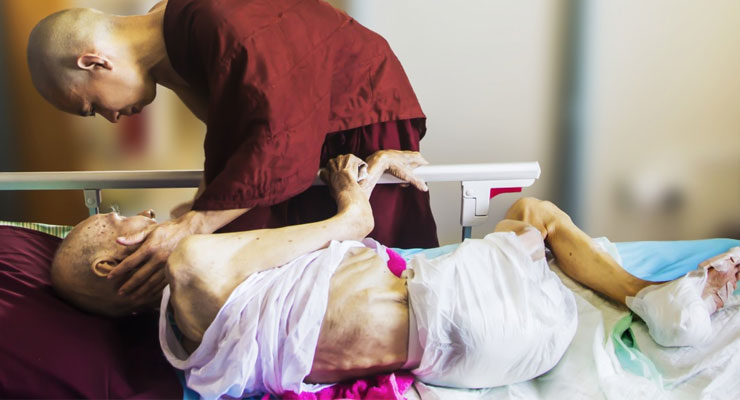
“Tengo una lista de veinte palabras mudas para ti.”[i]
Luis Ortega
We are endlessly rethinking how to deal with the end of life. We break the taboos. We begin the conversation with our loved ones and in our communities, showing it is not just a concern for healthcare professionals, the terminally ill or the elderly, but for everyone. And we question institutionalized approaches to death, fighting to replace them with personalized, humane models:
“On April 16 at the New York State Capitol in Albany, representatives from Death with Dignity National Center, Compassion & Choices New York, Death with Dignity-Albany, and End of Life Choices New York announced the formation of the New York Alliance for Medical Aid in Dying. This new coalition will work to build support among legislators and New York residents for the Medical Aid in Dying Act currently under consideration by the state Assembly.”[ii]
However, the end of life is encircled by myths and half-truths, greatly due to lack of knowledge and misperceptions, for instance:
“Despite the documented benefits of palliative and hospice care on improving patients’ quality of life, these services remain underutilized. Multiple factors limit the utilization of these services, including patients’ and caregivers’ lack of knowledge and misperceptions.”[iii]
One reason is the persistent uneasiness we have when thinking and talking about death. A second reason is the indisposition of some healthcare professionals to give alternative information. At the core of the issue is choosing who is in control:
“Research shows that advance directives can make a difference, and that people who document their preferences in this way are more likely to get the care they prefer at the end of life than people who do not.”[iv]
If cultural impacts are significantly motivated by numbers, when many people confront an issue, it becomes socially relevant, substantial, and noteworthy. All of this is complicated by the fact that America has the most geographically and culturally diverse generation in history, one in which cultures, ethnicities, religions, and geographies mix. As we plan for the end of life, we struggle to expand our options and even to decide to list our choices. A search for freedom and meaning motivates us. We want our own chosen way to say adiós:
“Everyone has the right to a humane and peaceful death.”[v]
Sources:
[i] “I have a list of twenty silent words for you.”
[ii] Announcing the New York Alliance for Medical Aid in Dying. https://www.deathwithdignity.org/news/2018/04/announcing-new-york-alliance-for-medical-aid-in-dying Death with Dignity.
[iii] Awareness and Misperceptions of Hospice and Palliative Care: A Population-Based Survey Study. https://www.ncbi.nlm.nih.gov/pubmed/28631493 The National Center for Biotechnology Information.
[iv] Advance Care Planning: Healthcare Directives. https://www.nia.nih.gov/health/advance-care-planning-healthcare-directives U.S. Department of Health & Human Services. NIH.
[v] End of Life Choices NY. https://endoflifechoicesny.org
Kisha Mercer says
Wow very deep knowledge is powerful.im blown by this I’m still mourning the death of two I just lost back to back in August 2017& January 2018 it brought back so many memories for me lossing my Mother in September 1988 & My Grandma 1989.but life goes on tho when it’s anyone times it’s there time.i wish would could live up to the stone Ages & Never Die.
Lisa Lawrence says
I have read your democracy and it was very interesting thank you for sharing your thoughts with me . Miss you .
Andrea mosley says
I finally sat down to read this knowing it would evoke emotion and thought- it (you) did not disappoint. Death is eminent and reminds us (or should remind us) that the end, our end , should be as carefully planned as our beginning. It should be filled with love.
Jhoei says
Losing your love ones and knowing you will not be with them for a very long time is a difficult situation for anybody. However, death will come to us all. So, we should be prepared for it when it comes.